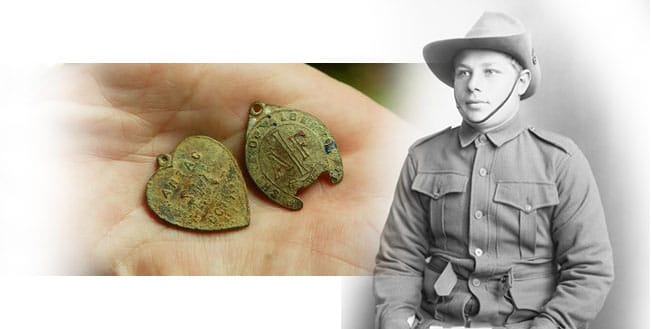A race is on to identify the final unknown soldiers of the Australian 5th Division, buried in a mass grave at Pheasant Wood following the Battle of Fromelles in 1916, and discovered in 2007.
The Australian War Memorial describes the Battle as “the most tragic event in Australia’s history”. Almost 2,000 Australians were killed in action, and 5,500 became casualties – the greatest loss by a single division in 24 hours during the entire First World War.
After the Battle, German soldiers buried them in mass graves in what was then-No Man’s Land. Most of the 250 soldiers found in the 2007 grave have since been identified and reinterred with honours at the Fromelles (Pheasant Wood) Military Cemetery.
But for 84 unidentified soldiers, their sole commemoration is a list of names on the walls of the VC Corner Cemetery, and possibly at the Australian War Memorial in Villers-Bretonneux, France.
Since the mass graves were found, the Fromelles Association of Australia have tried to match names to the lost soldiers, and give each man a proper headstone.
“Those ‘boys’ deserve the basic recognition of their name being inscribed on their headstone, not just for them, but for their families and descendants,” said the Association’s president, Geoffrey Benn. “They died for their country, it’s the least we can do.”
The Association has helped to identify 166 men from the mass grave. Working with the Australian Army, the Association targets individual soldiers likely to be buried at Fromelles, and then uses genealogical research – family histories and war-time records – to find family DNA donors to test the remains against.
“Hundreds of hours of meticulous research go into the discovery of just one potential donor,” Mr Benn said. “Members of the public with genuine information, or materials, can help to shorten this timeframe, before it’s too late.”
The Association has launched a website, www.fromelles.info, to collect family memorabilia, evidence and information from the public, and identify potential DNA donors.
It is designed to make it easier for members of the public to find out more information and help identify the final 84, Mr Benn said.
“We are the boys’ ‘last chance’,” Mr Benn said. “The time to access living memory has passed.”
More than 100 soldiers’ stories are already online, and another 600 are in development. They contain the soldier’s war record, and draw on family memories and soldiers’ letters home.
“It is a digital living history, so future generations can gain an insight our Fromelles history, both good and bad,” Mr Benn said.



